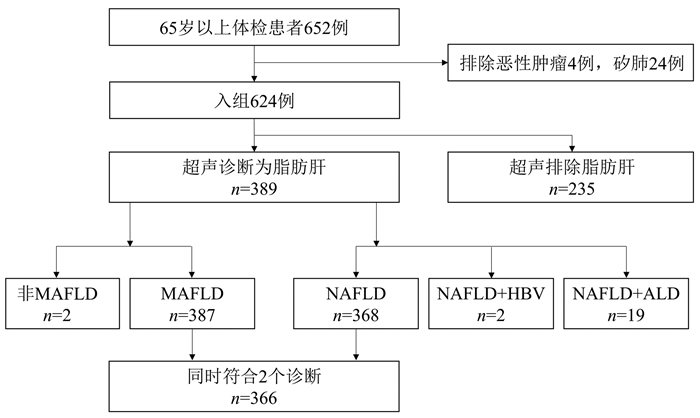| [1] |
ESLAM M, SANYAL AJ, GEORGE J. MAFLD: A consensus-driven proposed nomenclature for metabolic associated fatty liver disease[J]. Gastroenterology, 2020, 158(7): 1999-2014. e1. DOI: 10.1053/j.gastro.2019.11.312. |
| [2] |
LIN S, HUANG J, WANG M, et al. Comparison of MAFLD and NAFLD diagnostic criteria in real world[J]. Liver Int, 2020, 40(9): 2082-2089. DOI: 10.1111/liv.14548. |
| [3] |
ESLAM M, NEWSOME PN, SARIN SK, et al. A new definition for metabolic dysfunction-associated fatty liver disease: An international expert consensus statement[J]. J Hepatol, 2020, 73(1): 202-209. DOI: 10.1016/j.jhep.2020.03.039. |
| [4] |
Chinese Society of Hepatology, Chinese Medical Association; Chinese Society of Gastroenterology, Chinese Medical Association; Chinese Society of Infectious Diseases, Chinese Medical Association. Consensus on the diagnosis and therapy of hepatic fibrosis(2019)[J]. J Clin Hepatol, 2019, 35(10): 2163-2172. DOI: 10.3969/j.issn.1001-5256.2019.10.007. |
| [5] |
NEWSOME PN, CRAMB R, DAVISON SM, et al. Guidelines on the management of abnormal liver blood tests[J]. Gut, 2018, 67(1): 6-19. DOI: 10.1136/gutjnl-2017-314924. |
| [6] |
NAN Y, AN J, BAO J, et al. The Chinese Society of Hepatology position statement on the redefinition of fatty liver disease[J]. J Hepatol, 2021, 75(2): 454-461. DOI: 10.1016/j.jhep.2021.05.003. |
| [7] |
WONG VW, WONG GL, WOO J, et al. Impact of the new definition of metabolic associated fatty liver disease on the epidemiology of the disease[J]. Clin Gastroenterol Hepatol, 2021, 19(10): 2161-2171. e5. DOI: 10.1016/j.cgh.2020.10.046. |
| [8] |
YAMAMURA S, ESLAM M, KAWAGUCHI T, et al. MAFLD identifies patients with significant hepatic fibrosis better than NAFLD[J]. Liver Int, 2020, 40(12): 3018-3030. DOI: 10.1111/liv.14675. |
| [9] |
YE Q, ZOU B, YEO YH, et al. Global prevalence, incidence, and outcomes of non-obese or lean non-alcoholic fatty liver disease: A systematic review and meta-analysis[J]. Lancet Gastroenterol Hepatol, 2020, 5(8): 739-752. DOI: 10.1016/S2468-1253(20)30077-7. |
| [10] |
LI YY, XIE ZY. Advances in the etiology and treatment of non-obese nonalcoholic fatty liver disease[J]. J Clin Hepatol, 2021, 37(2): 452-457. DOI: 10.3969/j.issn.1001-5256.2021.02.043. |








 DownLoad:
DownLoad: